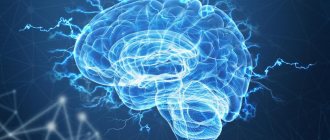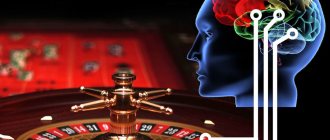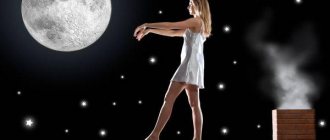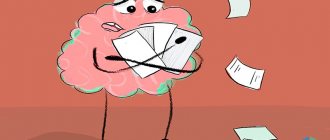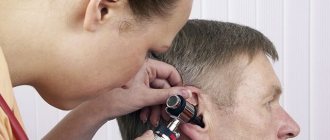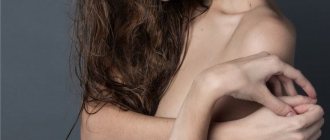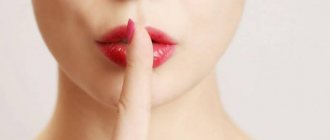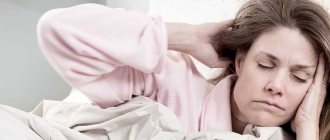Bruxism is an involuntary contraction of the chewing muscles, in which the jaw clenches tightly and teeth grind. The phenomenon is episodic, lasts from a few seconds to several minutes and can be repeated several times a night.
So what is it? What causes bruxism? What symptoms may be present? How does pathology manifest itself in a child and an adult? What treatments can be used to combat bruxism? Is it possible to cure the disease at home using improvised means? Why are occlusal aligners required to be worn? More on all this later in the article.
The main causes of teeth grinding in children
A popular misconception is that the main cause of bruxism in a child is inflammatory diseases of the oral cavity, which should be treated by a dentist. The pathological function of teeth grinding can occur against the background of:
- abnormal structure of the facial skull and teeth;
- neurological problems;
- parasitic infestations;
- poisoning with neurotoxic poisons.
Sometimes the leading cause is a lack of microelements such as magnesium and calcium, which leads to convulsive contractions of the masticatory muscles.
Features of the course of the disease in children
Bruxism in children is quite common (almost half of the child population). The disease usually manifests itself during the period from the beginning of the growth of the first baby teeth to the age of 7 years, when the teeth are replaced by permanent molars. In this case, the disease in children is temporary and goes away on its own.
The symptoms of a child's squeak are not much different from those of an adult. Parents notice periodic grinding noises that quickly go away. Sometimes constant tension in the facial muscles leads to their enlargement. The baby may feel pain in the jaw, joints or headache. If you have unpleasant and alarming symptoms, you should first contact your treating pediatrician, and then, if necessary, a somnologist.
Grinding in children also negatively affects the health of teeth that have not yet become strong. Often there is abrasion of the enamel, chips or cracks, chipping of part or the entire crown, and loosening of the row. Such problems require qualified assistance from a pediatric dentist. In parallel with eliminating the consequences, he will prescribe a special night guard or splint.
Pediatric bruxism is characterized by the fact that in most cases it does not cause discomfort or pain. The next morning the child feels well, without signs of pain. Children are characterized by increased excitability and activity. A child’s nervous system, which is not fully formed and is not yet stable, cannot respond correctly to all children’s emotions. As you grow older and your emotional state normalizes, all signs of bruxism gradually disappear.
Genetically determined teeth grinding in a child
Hereditary factors appear in children aged 3-6 years. When questioning parents, it is established that they or immediate family members have had teeth grinding at an early age. Typically, the manifestation of pathology occurs under the influence of unfavorable factors and emotional stress.
A genetically determined weakness of the nervous system provokes teeth grinding during sleep in a child. As children get older, the pathological function goes away, but to establish the hereditary nature of the disorder, other causes must be excluded.
Treatment options
Many people who are faced with bruxism ask themselves the question: how to treat it and who to turn to for help? First of all, it is necessary to understand that only a joint and integrated approach of several specialists who can eliminate this phenomenon can give a tangible positive result in the dynamics of the fight against the disease.
We fully understand that bruxism in adults is a consequence of the body's reaction to frequent, repeated stimuli that affect the body for a long time, and therefore potential treatment will most likely take a long period.
To avoid further destructive effects that bruxism brings to the oral cavity, and especially to the teeth, it is necessary to use one of the varieties of splints. Dentists also have special mouthguards that help keep your teeth intact.
Based on the results of the electromyographic analysis, a splint that normalizes myodynamic balance is selected for the patient, or a comprehensive treatment plan is developed together with an orthodontist or orthopedist, as well as an osteopath.
Modern thermally modulated night splints are already available, with the help of which you can protect your teeth from possible abrasion and at the same time remove additional stress from the joints, which will inevitably arise during repeated spasms. In myofunctional correction centers, the size of such splints will be adjusted to you optimally to the shape of your teeth, taking into account other important anatomical parameters of your oral cavity.
Thanks to the intense advancements in dental technology, you have the opportunity to experience various innovations that help in the fight against bruxism. Tires made of homogeneous thermoplastic material are already available for use. Its design feature is a flat, thickened base that provides effective protection of the occlusal surfaces of the patient’s teeth.
Statistics say that bruxism in adults is not such a rare phenomenon.
It has several forms in the time frame of its manifestation (night and day) and in the duration and destructive nature of the effect on the body (mild and complex form).
From 5% to 15% of adults suffer from this disease.
For those people who suffer from the negative effects of this phenomenon, you can use a splint that is worn on an ongoing basis, located in the depths of the oral cavity. Its peculiarity is the prevention of teeth closing in everyday life, plus, it is completely invisible to others due to its shape and unique fit.
With pronounced symptoms of bruxism, a specialist, using a specially made repositioning splint, can reconstruct the position of the articular head and in this way eliminate the cause of spasmodic phenomena in the maxillofacial muscles.
One of the most important parts in getting rid of the phenomenon of bruxism in adults is a constant, structured and consistent home part of the treatment procedures.
There are exercises that relieve excess tension in the masticatory muscles and jaw joints. Doing them regularly will help you feel relief and, possibly, get rid of morning headaches caused by bruxism.
Various drug treatments, as well as oral medications (tablets), are prescribed extremely rarely.
Only if bruxism in adults is accompanied by additional neurological symptoms, can the doctor prescribe sedative medications.
You need to pre-exert your jaw muscles before going to bed to minimize possible contraction during the night.
To significantly reduce teeth grinding during sleep, you can use an exercise with chewing balls, which must be placed in the mouth and chewed on one side or the other.
As you master this skill, you will add the number of balls and increase the duration of this exercise. It will significantly fatigue the entire masticatory apparatus, thereby relieving its internal tension.
To generally strengthen the body, you can drink vitamin and mineral complexes containing large amounts of B vitamins, calcium and magnesium at a certain frequency, as recommended by your doctor. This will help strengthen the condition of your nervous system, which will definitely have a positive effect on the fight against the phenomenon called bruxism in adults.
Good nutrition, good sleep and moderate exercise will strengthen your body and help you more effectively deal with the consequences of everyday stressful situations, which are very difficult for modern people to avoid.
For people experiencing this phenomenon, it is important to learn to go to sleep in a relaxed state. Auto-training, meditation, visualization and relaxation classes will help with this. Walking for an hour before bed will also make a positive contribution to the overall health picture. It is very important to be able to alternate between active work and periodic short rest breaks, both throughout the day and long ones for a long working period.
Try to spend your vacation with maximum abstraction from your everyday everyday problems. A change of scenery during this time is a great option.
It is no secret that bruxism in adults is a consequence of several negative factors, which, complementing each other, are strengthened in the subconscious. Because of this, the treatment itself should be structured in such a way as to eliminate all pathogenic irritants that spur this disease.
A relaxing massage of the whole body, especially the jaws, neck and chin, should be carried out on a regular basis. A visit to the jacuzzi and various types of hydromassage would be an excellent auxiliary therapeutic tool. A drug such as Botox is also used to eliminate the symptoms of bruxism.
The psychological climate in the microsocial environment where you live and work is very important, and even more important is your personal attitude towards everything that happens around you.
If you learn basic self-control skills, then such a negative phenomenon as bruxism in adults will quickly leave you. Sometimes, without the help of a psychologist, it is difficult to deal with intrapersonal and interpersonal problems that accumulate over the years and spur the development of various diseases. It is an experienced specialist in this field who will help you find all the vulnerabilities and work to minimize them. A big advantage of attending psychotherapy sessions is the opportunity to apply the experience gained during it and transfer it to further traumatic situations, which will help to quickly and effectively cope with them.
Reading an interesting book, listening to relaxing music or sounds of nature can help you relax your nervous system.
Doctors often recommend applying a damp, warm towel to your cheekbones after an attack of bruxism. This helps to temporarily alleviate pain. You should also not overeat or drink a lot of liquid at night; this will give additional tone to the gastrointestinal tract and can provoke an attack of teeth grinding in your sleep. Compresses and vigorous rubbing of areas of discomfort after an attack of bruxism often bring relief.
Teenage teeth grinding
Adolescence is characterized by inadequate regulation of the nervous system. Irrational distribution of study and rest, conflicts, weaken the central nervous system, provoking bruxism. However, for a child grinding his teeth in a dream, the reason does not always indicate a mental disorder.
In children under 18 years of age, teeth grinding (bruxism) can be caused by endogenous and exogenous factors. The occurrence of teeth grinding largely depends on the environment, habits and people surrounding the teenager. It is not worth leaving a problem without a solution, since sometimes it hides more serious illnesses, which in the course of further life activities can significantly worsen a person’s health and life.
What is bruxism - medical classification
The word “bruxism” comes from Greek and literally means “teeth grinding.”
In medicine, bruxism is classified as a temporomandibular disorder. The phenomenon of bruxism occurs especially often during sleep and this pathology is defined as a dysfunction, that is, an action that is carried out without a specific goal.
This problem is quite widespread in the population, with an estimated 10-20% of people experiencing bruxism once in their lifetime, and typically, those who suffer from this problem do not notice that they grind their teeth while sleeping.
This phenomenon is common in both men and women, and is also common in children. Bruxism can also be associated with sleep disorders such as insomnia.
How bruxism manifests itself - 3 common forms
The phenomenon of bruxism can be either daytime or nighttime, however, the first option is extremely rare, and the patient is clearly aware that he was grinding his teeth for no reason. Nocturnal bruxism is typical of the first stage of sleep, and each episode can last tens of seconds, repeating several times during one night.
There are three main forms of bruxism:
Noisy or chopping:
This form of bruxism occurs when someone grinds their teeth and then makes a noise similar to a squeal.
In the long term, this form of bruxism can lead to premature tooth wear.
Quiet or with squeezing:
It is characterized by clenching of teeth without noise. In this case, clenching the teeth can lead to minor injuries to the tooth enamel. It is also called oriented bruxism.
Mixed: bruxism that combines both forms described above, which alternate with each other, even during the same night.
Diseases of the teeth and jaw in the structure of bruxism
At the first manifestations of nighttime teeth grinding in children living in favorable conditions, without stress factors, attention should be paid to the oral cavity. The abnormal structure of the bones of the facial skull leads to incomplete closure of the jaws, which can result in teeth grinding. Modern dentistry allows you to eliminate the problem with timely treatment.
Children with untimely bite correction and teeth grinding face various complications, including inflammatory diseases of the jaw. The TMJ is one of the main anatomical structures that is affected by bruxism. Gradually this leads to its dysfunction.
Diagnosis of the disease
Since the child does not control his condition during sleep and does not wake up from his own creaking, his parents notice signs of bruxism. But parental complaints alone will not be enough to make an accurate diagnosis. The greatest information content is provided by modern hardware techniques, such as:
- polysomnographic sleep study - allows you to study a variety of problems associated with night behavior;
- electromyography of masticatory muscles – registration of muscle potentials at rest and tension;
- X-ray diagnostics - photographs of the maxillofacial parts of the skull allow us to determine violations of bone structures.
We recommend: What to do if a child has vomiting and diarrhea?
In older children, diagnosis may be based on a questionnaire. The doctor finds out the child’s sensations during sleep and after waking up, as well as the characteristics of daytime behavior. A dental examination plays an important role in diagnosis. Loose teeth, rapid destruction of fillings, gum inflammation and malocclusion are considered indirect signs of bruxism.
For diagnostic purposes, it may be suggested to install a brux checker - a special mouthguard designed for sleeping. The doctor analyzes the prints of the brux checker, finding out how powerful the pressure was and in which places the load was significant.
Nervous system disorders causing pathology
Neurology treats children whose teeth grinding at night is caused by a disorder in the interaction of the central and peripheral nervous systems. Typically, this form of pathology is combined with parasomnias - sleepwalking, nightmares, cessation of breathing during sleep and neurological disorders (enuresis, epilepsy). Unstable function of regulatory systems leads to unconscious stereotypical movements of the jaw at night.
Neurologists also help adolescents undergoing rehabilitation after facial trauma with peripheral damage to the inferior branch of the trigeminal nerve or its nucleus due to TBI. The development of painful closure is associated with tonic tension of the masticatory muscles due to pathological impulses.
Physiological explanation of bruxism
Teeth grinding occurs due to spasm of the chewing muscles, clenching of the jaws and their strong movement. The peculiarity of the disease is the fact that it occurs involuntarily. Most often this occurs during the patient's sleep at night, but some also worry during the daytime. In the first case, the pathology is called bruxism, in the second - bruxiomania. During the period of primary occlusion formation, the disease manifests itself in at least half of children. This is considered normal if it goes away by age 7.
Side effects of neurotoxic substances
Teeth grinding in teenagers is sometimes caused by bad habits. Smoking, especially at night, can stimulate the autonomic nervous system and lead to jaw creaking.
Bruxism is also caused by a more severe form of addiction – drug addiction. Finding himself in a dysfunctional company, a teenager begins to use psychostimulant drugs, including amphetamine, cocaine, and ephedrine. Even with a single dose, central regulation is disrupted and a strong neuropsychic effect occurs, which manifests itself as anxiety and agitation. After the effects of drugs, a person becomes sleepy and irritable.
Teeth grinding at night is also observed in adolescents who abuse antidepressants and alcohol. The unformed system of regulation of higher functions receives a serious blow.
Teeth grinding due to helminthiasis
Pinworm is the most common parasite that infects the intestines of a four-year-old child in kindergarten. If at least one infected person falls into the group, then after a while the worm affects all children.
A characteristic symptom of parasitic infestation is teeth grinding at night, when the pinworm actively multiplies in the large intestine. The morning of an infected person is difficult, scratching appears in the perineal area, and worm eggs accumulate under the nails, which will crunch if you do not wash your hands before eating.
ENT diseases
Diseases of the upper respiratory tract lead to bruxism. Otolaryngologists often hear complaints from relatives of patients that the child sleeps with his mouth open and periodically grinds his teeth.
An experienced doctor uses these signs and an instrumental examination to determine an enlarged adenoid. Overgrown lymphoid vegetations block normal breathing and lead to pathological grinding at night. A deviated septum can also disrupt sleep and lead to sleep disturbance.
Causes of Bruxism
Several reasons for this phenomenon in a child are considered:
- Heredity, when one of the parents suffered from symptoms of bruxism in childhood.
- Development of the endocrine system in a child or failure in it.
- Unhealthy and poor sleep, nightmares, frequent awakenings.
- Deviations in emotional development.
- Stress, aggressiveness, excitability and a nervous state in the baby caused by any environmental factors, depression.
- Loose teeth, malocclusion, unsuccessful dental care in the form of incorrect installation of fillings, crowns or braces.
- When a baby is teething, he may involuntarily clench his jaw to relieve the itching, which can lead to teeth grinding.
- An existing, but unproven fact is worms in a child and renal lamblia, which lead to depletion of the body in terms of vitamin B, followed by disorders in the nervous system, which can lead to bruxism.
- A disease such as adenoids, which causes difficulty in nasal breathing, affects the appearance of symptoms of bruxism in 70-80% of cases.
- Watching TV at night, spending time playing computer games, etc. , stimulating the emotional state of the child.
- Heavy food at night, aggravating the stomach and causing irritation of the nervous system.
You need to know that before putting the child to bed, you need to calm him down and prepare him for the coming sleep, so that all excitability and tension go away, the sleep is calm and sound, and nothing causes fear or anxiety.
Symptoms
Signs characteristic of bruxism increase gradually and have a functional and morphological basis. Symptoms include:
- Tooth pain associated with enamel damage.
- Hyperesthesia to cold or hot food occurs due to a violation of the integrity of the insulating dentin tissue.
- Fillings falling out.
- Traces of dental bites on the tongue with the appearance of wounds.
- Pain and fatigue in the temporomandibular joint.
- Contraction of the masticatory muscles when tapping on their surface.
- Damage to the buccal mucosa.
Most symptoms occur gradually and can be prevented. You need to contact a specialist after at least one of the listed signs appears.
Causes
When a person or his family complains that he is grinding his teeth, one should first determine the etiology of the disease, that is, why such a problem arose. Experts identify the following factors contributing to the occurrence of bruxism:
- Psychological is the most common reason leading to night grinding and other unpleasant consequences. More than 70% of cases occur precisely because of psychological stress, which a person is not able to cope with. This causes the chewing muscles to tense throughout the day, and at night the load only intensifies in the absence of conscious control. Therefore, if signs of bruxism are detected, it is better to first check the patient’s psycho-emotional state.
- Neurological – when the cause is epilepsy, tremor, enuresis, sleep disorders or apnea. It also turns out to be a consequence of damage to the trigeminal nerve, which tones the masticatory muscles without the conscious participation of the person.
- Dental – various diseases of the temporomandibular joint, malocclusion, poorly installed dentures or fillings and other anomalies.
- Gastroenterological - although rare, gastroesophageal reflux disease can also cause bruxism in an adult. And also provoking factors are food products - coffee, strong tea, junk food.
- Otolaryngological - similar to problems with snoring, frequent companions of bruxism include difficulty breathing, deviated nasal septum, adenoids, chronic runny nose, allergic reactions, etc.
- Osteopathic – as a result of general disorders in the body associated with other systems, for example, problems with the spine.
- Taking certain medications, alcohol abuse, smoking, or a simple lack of minerals and vitamins in the body.
It is popularly believed that bruxism also appears simultaneously with the action of helminths, but this is not a fact confirmed by science. But who is still at risk are people suffering from Huntington’s chorea, Parkinson’s disease, after receiving a brain injury or with pathological formations in it. It has been established that men are susceptible to this condition more often and in them this pathology can be inherited.
Complications
Without treatment, a child who grinds his teeth in his sleep gradually worsens his health. Common consequences:
- An aesthetic defect that consists of a change in the appearance of the teeth. They become worn out, flat with cracks, chips and spots in place of worn out enamel and fallen dentin. The smile of a sick person begins to scare away people around him.
- Exhaustion associated with the inability to properly grind food and eat cold and hot food. People become irritable because of their favorite dishes that include meat or other solid foods.
- Progressive dysfunction in the temporomandibular joint. Arthrosis or arthritis develops, and a clicking sound appears when the jaws are clenched. The child cannot chew food normally due to pain. Without adequate treatment, the bone is destroyed and the mouth cannot be opened or closed.
- Inflammatory changes develop in the soft tissues of the tooth, moving to the gums, which atrophy and expose the root. With deeper destruction, the branches of the trigeminal nerve and other nearby fibers are affected.
Complications develop slowly, but cause an irreparable blow to health. You need to fight bruxism before the consequences appear, only then can you avoid threats to your life and appearance.
Treatment of bruxism
In the treatment of bruxism, it is customary to distinguish two aspects: dental and psychological. In the first case, we mean various measures to prevent damage to teeth, in the second, eliminating the psychological cause of bruxism.
To begin with, try clenching your jaws as little as possible throughout the day, moving them in such a way as to minimize the friction of your teeth against each other. This will help you control bruxism to some extent. Make it a rule to relax your jaw muscles several times a day, in moments when you are not talking to anyone, for example, when working at the computer. Keep your teeth slightly apart and your lips closed. To help you maintain this position, apply slight pressure with your tongue on the roof of your mouth. And if the main attacks of bruxism happen to you during sleep, practice these exercises in bed, before going to bed.
Here is a good chin exercise that helps treat bruxism. It works to relax the temporomandibular joint and can even help correct your bite. Keep your head straight, relax your jaw, and gently but forcefully push your chin back with two fingers. In this case, the mouth should be slightly open. It is better to perform the exercise in front of a mirror; this will help you find the correct position of the upper and lower jaws relative to each other. If you want to speed up your bruxism treatment, return to this exercise three times a day, doing fifteen repetitions each time.
Massage of the jaw and chin also helps treat bruxism. Gently squeeze the sides of your jaw with your palms, as well as your neck just below the jaw. Move your fingers in a circle, applying light pressure. If you feel pain or discomfort, stop the exercise. This type of massage can help relieve tension and relax the maxillofacial muscles.
The psychological part of the treatment of bruxism is to eliminate the causes of excess stress, which is almost always the main cause of this disease. Practice deep breathing exercises throughout the day, inhaling through your nose and exhaling through your mouth to help relieve tension. Regular physical activity also helps reduce stress and improve your mood, as exercise promotes the body's production of endorphin hormones. Sign up for yoga, which also helps reduce tension in the muscles, including the facial ones.
Options to combat teeth grinding
The use of methods with which to treat patients with bruxism depends on the cause of the disorder. Among the general principles of therapy to get rid of the disorder are:
- Adequate rest for the jaw. When the child is not chewing food or talking, you need to make sure that he keeps his jaw relaxed and does not clench his teeth.
- Installing a dental guard at night from the very first day of detection of pathology will help avoid abrasion of enamel and destruction of dentin.
- Limit active games or spending time on the computer before bed. Such activities can disinhibit the nervous system and increase excitability in the central nervous system.
- Develop a clear daily routine. It is better to go to bed at 20.00-21.00 hours and wake up at the same time.
- Use of medications and physical procedures prescribed by the doctor.
- If necessary, supplement the main treatment with recipes from alternative medicine.
These simple steps can help reduce the number of nighttime teeth grinding episodes. Sometimes bruxism hides a disease that is difficult to correct with such recommendations. Then, in order to prevent serious health consequences, a specialist must establish a diagnosis and treatment.
How to get rid of the problem?
Effective and high-quality treatment of bruxism involves complete disposal of the original source that provoked the disease. A complete diagnosis will help with this.
If you suspect a pathology, you may need the help of several specialists:
- dentist,
- neurologist,
- somnologist (polysomnography will show the process of sleep and the deviations present in it),
- psychologist or psychotherapist,
- attending physician or family doctor.
It is important to undergo a full examination, which will show the whole picture of the patient’s condition. Eliminating the root cause will lead to the final elimination of the squeak.
Sanitation of the oral cavity
If the grinding is caused by pathologies of the oral cavity, the dentist will take the necessary measures:
- correcting the bite by installing a brace system,
- replacement of crowns or dentures with new high-quality and correctly fitted ones,
- treatment of caries and other diseases.
The doctor will also eliminate the unpleasant consequences of the squeak. It may be necessary to fluoridate or remineralize the enamel, install fillings or artificial crowns on damaged teeth.
Consultation with a psychologist
For depression, chronic stress, neuroses or tension, working with a psychologist is mandatory. During the course of treatment, the doctor will help you understand the root causes of psychological disorders. During the sessions, he will teach you how to properly cope with your emotions and problems.
The patient will get rid of fears, childhood complexes, and will be able to properly release negative emotions and accumulated aggression. Psychotherapy will have a positive effect not only on the condition of the oral cavity, but also on health in general.
Physiotherapeutic procedures
Physiotherapy is used in combination with basic treatment. It is aimed at additional relaxation of the facial muscles, that is, at reducing its tone.
For such purposes it is successfully used:
- osteopathic sessions (an experienced osteopath will relax the muscles and tendons, bringing them to normal condition),
- warming compresses,
- relaxing massage,
- yoga and meditation (helps restore mental balance and self-control),
- regular exercise (promotes the natural release of adrenaline and healthy sleep),
- manual therapy,
- injections of botulinum toxin (correctly injected Botox paralyzes the muscles, which will stop the creaking).
Protective mouthguard
Wearing a night guard solves two problems at once - it eliminates grinding and protects teeth. It is a transparent structure made from safe biopolymer materials based on an impression of the patient’s jaws.
Occlusal guards are elastic and reliable, they can withstand heavy loads and do not cause discomfort. Their varieties:
- Day and night. Daytime mouth guards are called splints; they must be worn throughout the day; they are prescribed for serious stages of the disease. The tires are invisible to others, they do not distort speech, and do not interfere with eating. Night clothes are worn only during sleep.
- Resonating mouthguards. Prescribed for advanced or serious cases of bruxism. In addition to their main functions, resonating mouthguards have a completely therapeutic effect - they move the head of the joint, which eliminates spasm and clenching.
- Mouth guards for one or two jaws. The type of night guard will depend on the degree of bruxism and the need to protect one or two jaws.
Folk remedies
Treatment of bruxism using traditional medicine:
- taking a soothing bath before bed with a decoction of medicinal herbs (chamomile, mint, thyme, oregano, lemon balm, motherwort, valerian root),
- drink teas based on the above-mentioned plants,
- before going to bed, drink a glass of warm or hot milk with a teaspoon of honey and turmeric,
- Give your child an apple to eat before bed to “tire” his jaws (nuts or seeds are also suitable for adults),
- Eat foods rich in potassium, magnesium and vitamin B.
Medicinal effects on bruxism
Treatment of bruxism should be carried out comprehensively. The effect of the drugs should be both to strengthen the general condition of the child and to suppress the cause of teeth grinding.
If a child begins to grind his teeth due to nervous tension, you can use sedatives, for example, valerian, motherwort. Tranquilizers that enhance the release of GABA have a strong sedative effect. A product from this group can be purchased by prescription, as prescribed by a doctor.
The use of antiepileptic drugs, for example, valproic acid, is limited to strict indications. Children should not take this medicine. To adjust the metabolism of microelements and stabilize the condition during periods of increased mental stress, you can use Magnesium B-6, as well as vitamin B12. In addition to these medications, the doctor may prescribe ascorbic acid and calcium.
In case of infection with parasites, an anthelmintic drug is prescribed that can lead to the death of helminths or stop their reproduction. Mebendazole is often used, and albendazole is less commonly used.
Traditional methods
Alternative medicine offers many ways to stop bruxism. To stop your child from grinding his teeth, you can drink chamomile tea, which acts as a good sedative. Baths with essential oils are also recommended to relieve the nervous system.
For local muscle relaxation in a child, home physiotherapy should be used. Using a heating pad, warm up the chewing muscles, which are located slightly above the angle of the lower jaw.
Bruxism from helminthic infestations can be overcome by using pumpkin seeds, tansy flowers, and centaury grass. The folk method of killing parasites is less toxic to the child’s body than the drugs offered by traditional medicine, but less effective. To properly use plant components against teeth grinding, you need to determine the type of worms causing the disease. Tansy is more active against pinworms, pumpkin seeds kill tapeworms, and centaury kills whipworms.
Diagnostic methods
Since bruxism is considered a polyetiological disease, before starting its treatment it is important to conduct a comprehensive diagnosis. To begin with, a standard procedure is prescribed using brux checkers. These devices are mouthguards to be worn at night. After the patient wears them overnight, the impression is sent to the dentist for analysis. This way you can determine which teeth are experiencing overstrain, and how much the disease is related to the bite and location of a person’s teeth.
In order to diagnose pathologies of the masticatory muscles, electromyographic analysis is used. This research method will allow you to assess the condition of the muscles at rest and in motion. This way you can determine myofascial pain syndrome, and by the location and function of the muscles, you can identify incorrectly selected and installed prostheses. In children, the mechanism of development of the disease is often associated with the process of teething. Symptoms of bruxism will help parents identify and pay attention to their child’s malocclusion in the early stages.
You may need to consult a neurologist, otolaryngologist, psychotherapist, or maxillofacial surgeon. Based on the data of a comprehensive examination, a final diagnosis can be made and a suitable treatment regimen can be prescribed. The Clinical Brain Institute employs qualified specialists who have successful experience in treating bruxism in patients of all ages. There are also all conditions for examination using instrumental methods.
Prevention of bruxism and useful tips
Bruxism in a child is formed under the influence of certain factors. To prevent the development of bruxism and the consequences associated with it, you need to use simple recommendations:
- Preventive visits to the doctor will help avoid pathologies that cause teeth grinding. Do not hesitate to tell the specialist all the symptoms in detail.
- Do not use yelling or harsh parenting methods with your child.
- Doing household chores, school assignments, and eating food must be done at least 3 hours before bedtime.
- Before going to bed, it is recommended to engage in calming activities. An excellent choice would be reading a book, calm conversation, or drawing.
- If a teenager has become addicted to smoking, alcohol, or drugs, then they urgently need to wean them from bad habits.
- The child should spend most of his free time outdoors, walking or doing physical exercise.
Teeth grinding is easier to prevent than to treat. The tips listed will help stabilize the nervous system and help the child grow up healthy.
Diagnosis of the disease
One of the first diagnostic methods is palpation when examining the oral cavity;
the patient involuntarily clenches the doctor’s fingers with his teeth, the teeth closing within a few seconds. To determine the moments when spasms occur and to exclude epilepsy, the patient undergoes a polysomnographic study.
Polysomnography is sleep analysis using specialized computer programs.
To confirm the diagnosis and clarify which teeth have the maximum load, the dentist uses a diagnostic method using a bruxchecker - a professional mouth guard made from an accurate impression of the upper and lower dentition.
The Brooks mouth guard is put on by the patient immediately before bed, and in the morning the device is sent to the laboratory for analysis.
Using the fingerprints, the dentist determines which areas of the teeth are the most overloaded.
Bruxism entails a number of undesirable consequences for the body:
- Injury to the facial nerve.
- Premature wear of enamel. The impact violates the integrity of each individual tooth, loosens it, and moves it out of place. As a result, sensitivity increases, bleeding gums occur, and the smile line is significantly distorted.
- Pain in the ears, nose, nagging headaches in the morning.
- Insomnia, irritability, overwork.
- Painful sensations in the facial muscles due to overstrain.
Since bruxism in adults is a potential sign of epilepsy, diagnosis is urgent. Psychological discomfort from awareness of the problem and deterioration in health can be prevented if you consult a doctor in a timely manner.

